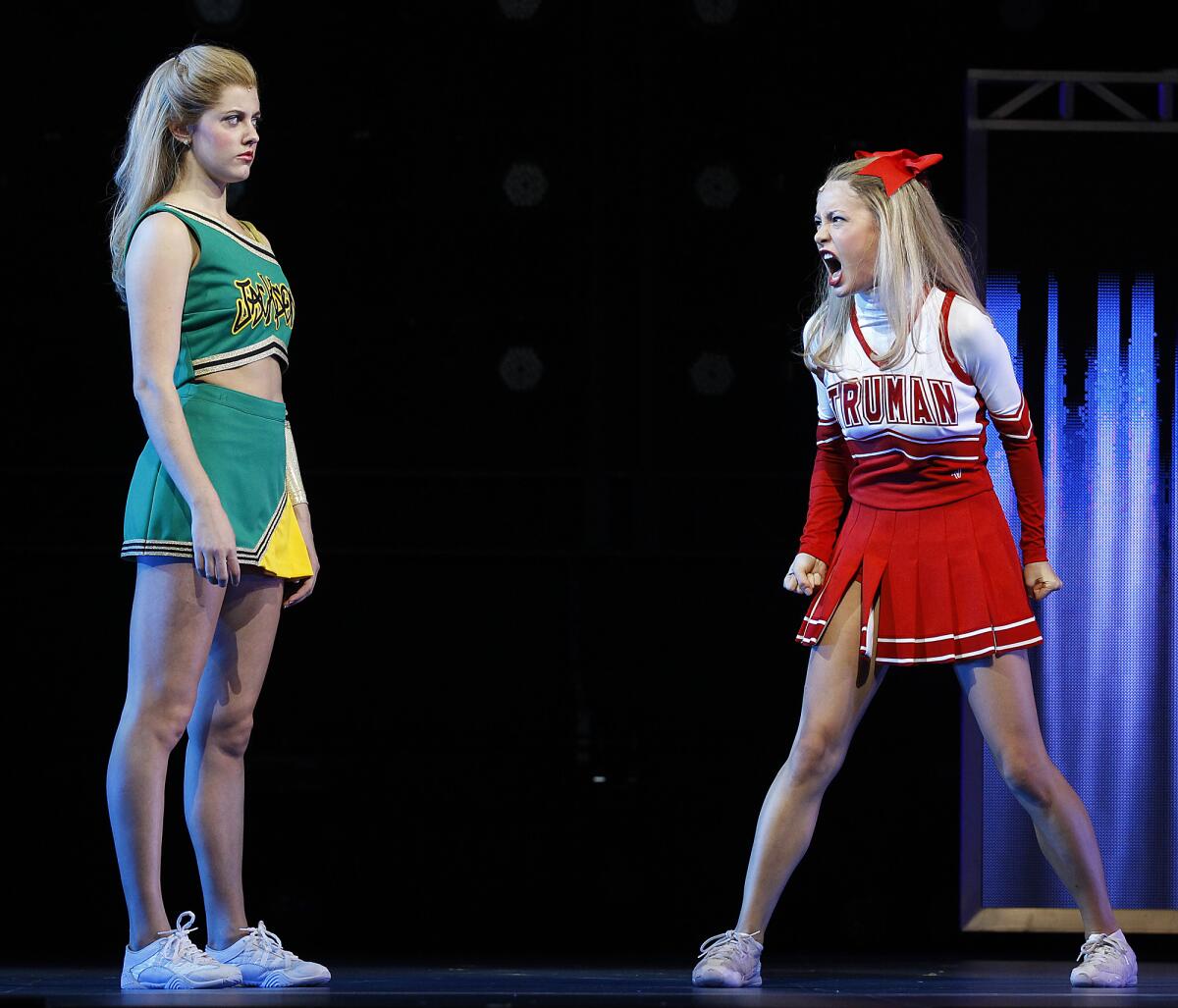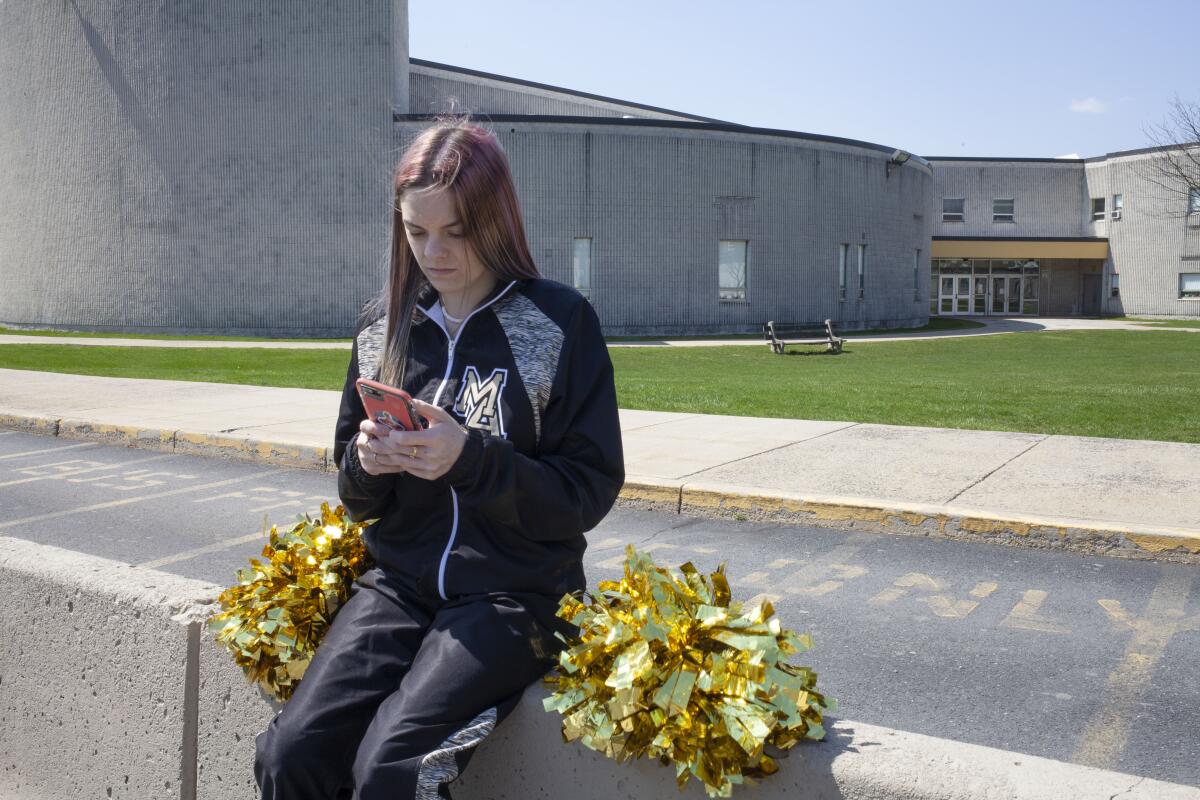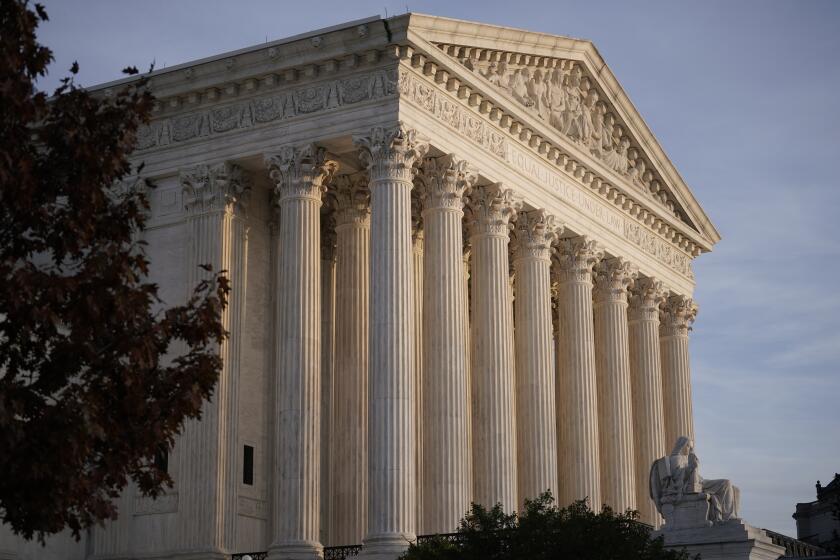Commentary: It’s OK to cause some internet drama if you get cut from cheer squad

In pop culture, America’s most famous pedagogic tool for teaching everyone how the world could work, there are two opposing models for law and order in the high school cheerleading system.
In TV’s “Glee,” which premiered on Fox in 2009, the cheer team’s real star is its coach, Sue Sylvester, a mercurial tyrant whose autocratic standards yield award after award, no matter the cost to her students grappling with body-image issues and teen pregnancy. Cheer is war, and in war you lose soldiers. Disloyalty, in the form of joining the glee club, is sedition. “I’m all about empowerment,” says Sylvester, played by a track-suited Jane Lynch. “I empower my Cheerios to live in a state of constant fear by creating an environment of irrational, random terror.”
But 2000’s landmark cheer movie “Bring It On” imagines a seemingly coachless alternative where school cheer squads operate without adult oversight. New cheerleaders are selected by a syndicalist tribunal of current cheerleaders, who direct their own routines, some of which are stolen from more creative, talented peers. “This is not a democracy, this is a cheerocracy” says cheer captain Torrance Shipman, played by Kirsten Dunst. “If we’re gonna be the best, we have to have the best.” Under this dictatorship of the studentariat, competitive conditions seem no less cutthroat. When students wear the uniform under any modern on-screen regime, they cheer to win.
In real-life public schools — America’s second-most famous pedagogic tool for teaching everyone how the world could work — cheerleading management tends to favor a more corporate approach, somewhere on the center-right of the Shipman-Sylvester spectrum of cheer autonomy. Cheer squads are taught that authority rests with coaches, and the coach’s authority, which flows legally downstream from school boards elected by voters, is resolute. It is a democracy, but not one that cheerleaders vote in.
With a focus on personal stories, director Greg Whiteley calls the visual style of his Netflix documentary ‘Cheer’ ‘simultaneously aggressive and poetic.’
Every now and then, however, cheerleaders can successfully question authority and the status quo, within limits. That’s what the U.S. Supreme Court affirmed this week in defending a Pennsylvania cheerleader’s vulgar Snapchat posts, issuing a ruling that set a new First Amendment standard that expands protections for public-school students’ off-campus speech. Though perhaps it’s not teaching a lesson to students about speech that will extend much further into the adult world.
The best controversies are the ones where everyone agrees what happened. As regulations go, the Mahanoy Area High School Cheerleading Rules were clear enough about what was expected of a central Pennsylvania student hoping to land on cheer squad circa 2017-2018: You have to show up. Uniforms are worn only at authorized events. You have to be respectful: “There will be no toleration of any negative information regarding cheerleading, cheerleaders, or coaches placed on the internet.”
In other words, contemporary high school cheerleading is a lot like a job. There’s a competitive selection process that pits people against each other, and that process has winners and losers. There’s a schedule. There’s a dress code. There are people in charge who tell everyone where to stand and what to do, and they’re managing a jostling militia of subordinates who need to get along at least enough to complete basic tasks. There might be a social media policy in the contract that many public school districts make cheerleaders sign as a condition of engagement. Break the rules, lose the uniform, just like Target or Starbucks.
Like many scholastic programs, the upsides of cheerleading are often framed vocationally: What you learn here could help you win a job, or maybe prevent you from making the kind of dumb mistakes that can get you fired. “The main purpose of the rules is to not only teach our students that they have to follow rules, and if they don’t follow them there’s consequences, but in addition to that, we want to teach them team-building skills and skills that they will take with them after they graduate,” Mahanoy math teacher and cheer co-advisor Nicole Luchetta-Rump testified at a court hearing in 2017. Which, if anything, only escalates the stakes of any selective high school extracurricular activity. What if you don’t make the cut and don’t learn the skills you need to get ahead?
When a 15-year-old rising sophomore at Mahanoy missed varsity and only made the JV cheer squad — while a freshman beat her to make the top squad — she vented to a private group of friends on Snapchat while hanging out at a local store called the Cocoa Hut on a Saturday. “f— school f— softball f— cheer f— everything,” she wrote, including a photo of her flipping off the camera. She added: “Love how me and [another student] get told we need a year of jv before we make varsity but tha[t] doesn’t matter to anyone else?” She included an upside-down smiley face emoji.
To even be considered to join the squad for the next year, the student had already signed a contract as a condition of tryouts, and this sure looked like “negative information regarding cheerleading, cheerleaders, or coaches placed on the internet.” Someone showed the quasi-private posts to the coaches, and they blocked her from joining the squad for the next year, and the school district backed up the coaches’ decision. The student’s parents, Lawrence Levy and Betty Lou Levy, sued on her behalf, arguing the public school’s restrictions on their daughter’s weekend, off-campus commentary violated the First Amendment.
After the case, aided by the ACLU, reached U.S. District Judge A. Richard Caputo in Pennsylvania’s Middle District, he noted the lopsided balance of power between the school and “B.L.,” as the student’s name was stylized as a minor.
The school’s cheer contract argued that B.L. had effectively waived her First Amendment rights in exchange for joining the squad, even in its junior varsity form. Like any contract, you have to give away some things to get some things. But it’s not as if the cheer contract had been collectively bargained, like a teachers’ contract might be; schools don’t exactly hand out union cards with the pompoms at orientation. The school just made up the rules on its own and made students agree to them.
“Neither B.L. nor her mother had bargaining equality with the coaches or the school,” Caputo noted. “The Cheerleading Rules were not subject to negotiation; and B.L. and her mother were not represented by counsel when they agreed B.L. would abide by the Rules.” The judge thought the whole arrangement seemed coercive; the student still had First Amendment protections. Caputo ruled in the student’s favor, and the school unsuccessfully appealed to the Third Circuit Court of Appeals and then to the Supreme Court.

Then B.L., now of age at 18 and revealed as Brandi Levy, starts really winning, ultimately getting the U.S. Supreme Court to back her up on Wednesday and to expand protections for student speech on social media. But this is also the point where the popular argument for scholastic cheerleading as preparation for a professional career starts going off the rails. “The school itself has an interest in protecting a student’s unpopular expression, especially when the expression takes place off campus,” Justice Stephen Breyer wrote in his opinion for the 8-1 majority. “America’s public schools are the nurseries of democracy. Our representative democracy only works if we protect the ‘marketplace of ideas.’”
But in the marketplace of labor, where a market is just a market, going to the Cocoa Hut on a Saturday and posting “f— Target” or “f— Starbucks” if you don’t get a promotion can be an easy way to get fired from a job at Target or Starbucks, and the Supreme Court won’t say a word.
In rulings in two cases, the Supreme Court protected constitutional rights but showed flexibility.
After graduating and leaving the cheer squad, many Americans apply for jobs in a competitive interview process. Those jobs have rules that are just sort of made up by the institution and aren’t really bargained with anybody; they’re just shoved at you as a condition of getting paid. Don’t like the rules? Maybe there’s somebody else who wants this job more. This is the prevailing doctrine of at-will employment that most Americans work under; workers don’t even need to break the rules to get dismissed, with some limited exceptions for collective action with coworkers.
The First Amendment is better protection against the governments that manage schools than the private employers that manage workplaces. So in the land of public-school cheerleading, the Supreme Court says it’s OK to cause some internet drama at the Cocoa Hut if you get cut from cheer squad. Enjoy the freedom while it lasts.
Pearce is the president of the Media Guild of the West.
More to Read
The biggest entertainment stories
Get our big stories about Hollywood, film, television, music, arts, culture and more right in your inbox as soon as they publish.
You may occasionally receive promotional content from the Los Angeles Times.












